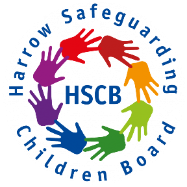Neglect
Neglect is the persistent failure to meet a child’s basic physical and/or psychological needs, likely to result in the serious impairment of the child’s health or development. Neglect may occur during pregnancy as a result of maternal substance abuse. Once a child is born, neglect may involve a parent or carer failing to;
· provide adequate food, clothing and shelter (including exclusion from home or abandonment)
· protect a child from physical and emotional harm or danger
· ensure adequate supervision (including the use of inadequate care givers); or
· ensure access to appropriate medical care or treatment
It may also include neglect of, or unresponsiveness to a child’s basic emotional needs. (Working Together 2023)
Contributing factors can include; parental mental health problems, parental substance misuse, domestic violence, poor parental functioning, inadequate housing and poverty, and sexual abuse.
Harrow SCB launched the Child Neglect Guidance and Assessment of Care as a result of a learning the lessons review of a family in 2013, and subsequent case review in 2015, which highlighted the complexity of neglect and the serious harm that can be caused to children at different stages of development. The guidance is aimed to improve quicker identification and assessment of children who are at risk of neglect and support evidence gathering of childhood neglect taking place.
The toolkit was revised. The revision was led by Children Services (Alison Levy and Janice Miller) and with multi agency input. We are grateful for their lead in this revision to make it more user friendly for people working with children and families in Harrow.
Quality of Care and Neglect toolkit- Introduction
Harrow SCB launched the Child Neglect Guidance and Assessment of Care as a result of a learning the lessons review of a family in 2013, and subsequent case review in 2015, which highlighted the complexity of neglect and the serious harm that can be caused to children at different stages of development. The guidance is aimed to improve quicker identification and assessment of children who are at risk of neglect and support evidence gathering of childhood neglect taking place.
The toolkit has recently been revised. The revision was led by Children Services (Alison Levy and Janice Miller) and with multi agency input. We are grateful for their lead in this revision to make it more user friendly for people working with children and families in Harrow.
Quality of Care and Neglect toolkit- Introduction
The Child Neglect tool is designed to assist you in identifying and assessing children who are at risk of neglect. It is to be used when you are concerned that the quality of care of a child you are working with suggests that their needs are being neglected. It will help you to reflect on the childs circumstances and will help you put your concerns into context and identify strengths and resources. The Child Neglect tool can be used to inform decision-making, assessments and planning. It can also be used in one to one’s with managers or in supervision. It is a tool that can be used with families and does not replace assessments such as the Common Assessment Framework, Early Help Assessment or Childrens Social Care assessments but should be used in conjunction with them.
The Quality of care and Neglect toolkit is designed to assist you in identifying and assessing children who are at risk of neglect. It is to be used when you are concerned that the quality of care of a child you are working with suggests that their needs are being neglected. It will help you to reflect on the childs circumstances and will help you put your concerns into context and identify strengths and resources. The Child Neglect tool can be used to inform decision-making, assessments and planning. It can also be used in one to ones with managers or in supervision. It is a tool that can be used with families and does not replace assessments such as the Common Assessment Framework, Early Help Assessment or Childrens Social Care assessments but should be used in conjunction with them.
A group of academics highlight the lessons for social workers from the latest studies of safeguarding disabled children
August 14, 2015
By Kirsten Stalker, Julie Taylor, Debi Fry, Chris Jones, Audrey Cameron, Alasdair Stewart and Anita Franklin
Disabled children are 3 to 4 times more likely to be abused than non-disabled children. However, the real prevalence rates are probably higher because theres also evidence that the abuse of disabled children is widely under-reported.
Children with communication impairments, learning disabilities and ˜behavioural disorders are particularly vulnerable. The abuse of disabled children appears to start at an earlier age than for other children and boys are disproportionately affected.
Disabled children are more likely than others to be abused by family members or someone they know, but are also vulnerable to maltreatment in care settings.
A recent study of child protection practice in Scotland suggests that disabled children fare less well in child protection services than their non-disabled peers. Despite social workers desire to be child-centred, some were anxious about or even resistant to working with disabled children.
Where a child had communication impairments, this could be seen as a real obstacle. One social worker told the study: If you cant communicate with a child, then you just kind of give up.
Other social workers, however, have creative ways to adapt communication with disabled children and seek their views.
The research raised concerns about the risk of social workers over-empathising with parents, based on the view that having a disabled child was very burdensome. This can take the focus away from the childs needs and may even allow neglect or abuse to continue.
Some practitioners from other agencies health, education, the police and the third sector believed that social workers sometimes applied higher thresholds for action to disabled children than were advisable, giving examples of young people left in squalor for far too long.

